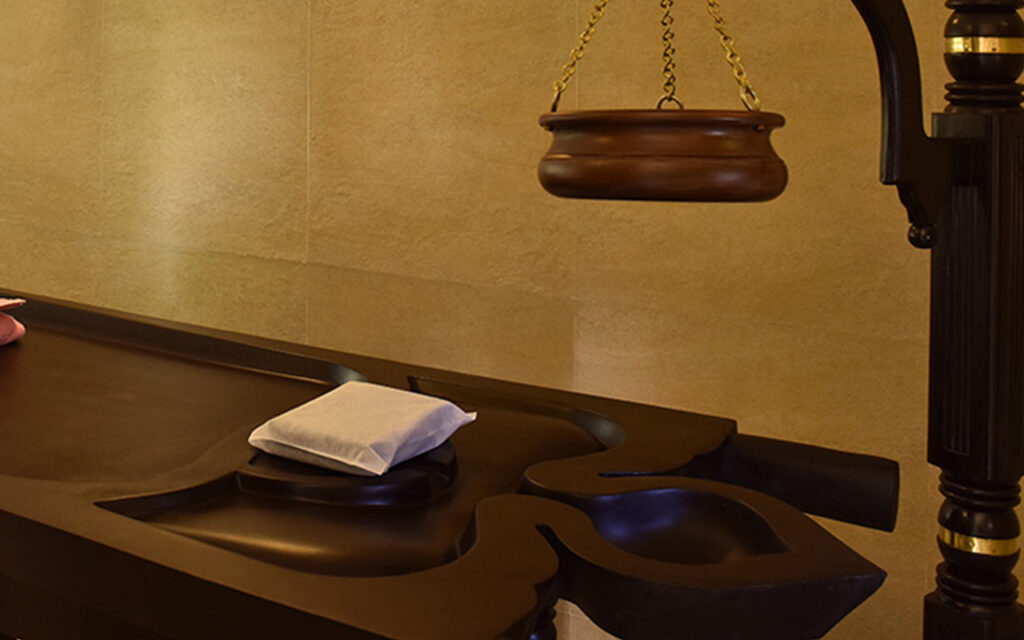
What is Panchakarma?
Panchakarma is a method of cleansing the body of all the unwanted waste after lubricating it. Panchakarma are 5 (five) in number; hence the term PANCHA (five) – KARMA (procedures). Panchakarma treatment is unique in the sense that it includes preventive, curative and promotive actions for various diseases.
Five Karmas
The body can be divided on the basis of the parts that need cleansing. Head, GIT (gastro- intestinal system), upper and lower. The five main Karmas to cleanse the complete body are
-
Vamanam (therapeutic emesis)
Induced vomiting helps clear the upper gastro till the duodenum (end of stomach) and part of the respiratory tract.
-
Virechanam (purgation)
Induced purgation clears the lower gastro from the duodenum (end of stomach) till the exit.
-
Nasyam
nasal instillation of medicated substances helps clear the respiratory tract and para-nasal sinuses.
-
Vasti (Therapeutic Decoction Enema)
Decoction enema cleanses the area from the transverse colon till the anus.
-
Raktamokshn
Cleaning of blood and viable against ailments caused because of impure blood
Steps followed in a Panchakarma Therapy
The complete process of Panchakarma consists of three steps.
- Poorva Karma, which is the preparatory procedure required before the main procedure to enable a person to receive the full benefits of the main treatment. It consists of two main processes – Snehan (oleation) and Swedan (fomentation). These methods help to dislodge the accumulated poisonous substances in the body, thus preparing them for their complete removal.
- Pradhan Karma or the main procedure. On completion of the first step, it is decided which of these are to be done depending upon the proximity of the waste. An increased level of upper respiratory tract waste shall call for Vamana. Similarly, a lower gastro accumulation of waste calls for a Virechanam.
- Paschaat Karma or the post-therapy dietary regimen to restore the body’s digestive and absorptive capacity to its normal state.

No Comments